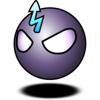I'm trying to learn the low level components of computer graphics. I'm stuck on what seems like a basic concept. So I understand that I use the matrices to manipulate the vertices and translation between the different spaces. The piece that just isn't clicking for me is how do I define the size of my scene. So if I make a cube that goes from -1 to 1 on each axis how do I know how big that is relative to my scene?
So for example if I had a scene that was 1 mile and I wanted to make a cube that was 5 ft in every dimension what would that look like?
Thanks in advance for your responses.











